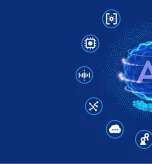Nearly one in three IT professionals report that their business is now using artificial intelligence, according to a report IBM’s Global AI Adoption Index. The IBM research indicated that natural language processing (NLP) powered applications of nearly half of surveyed businesses. Fortune Business Insights reports that the NLP market will witness an impressive 29.4 percent compound annual growth rate by 2028, reaching 127.26 billion dollars.
Why NLP? Because NLP represents a field of artificial intelligence that challenges our expectations of the limitations of machines. NLP enables machines to understand human language by creating intelligent systems that are capable of interpreting context, sentiment, and syntax. In this article we take a closer look at three key factors driving the exponential growth of NLP.
1. Smart Devices
Question answering is an NLP concept that enhances user productivity and helps people get relevant information quickly. The adoption of smart devices with virtual assistants such as Amazon Alexa, Siri, and Google Home strongly favor the use of NLP platforms. With over 50% of American households that rely on smart home devices, the NLP AI technology is needed more than ever to meet the increasing demand.
2. Customer Dervice
NLP further aids in the automation of tasks in customer service. A sophisticated NLP model would streamline repetitive tasks and understand company policies enough to fully meet customers’ needs. Chatbots are another example of how NLP is already integrated into our customer service experience. Need quick information about an upcoming flight? Details on your prescription? Live closed captioning in a video call? We regularly interact with NLP in ways that promote convenience while freeing up human capital.
The largest and most significant factor driving the exponential growth of NLP is the COVID-19 pandemic and the need for automation in the healthcare industry. In April 2021, a team at Stanford University presented a new NLP system used to label and classify biomedical data; researchers labeled COVID-19 systems through a NLP database that was found to be as effective as previous hand-labeled models. Due to the rapidly evolving nature of the pandemic, annotated datasets were needed fast, making NLP ideal for its non-time consuming (albeit in this case imperfect) capabilities. The healthcare industry is amassing huge volumes of data that require advanced technologies to interpret the data for clinicians, researchers, payers and other stakeholders.
3. COVID-19
COVID-19 harnessed natural language processing technologies to address the informational gaps in healthcare. NLP bridges the disconnect between automation and human language. The more NLP is integrated into diverse industries, the better it will become in accomplishing what it was designed to do, solve human problems.






